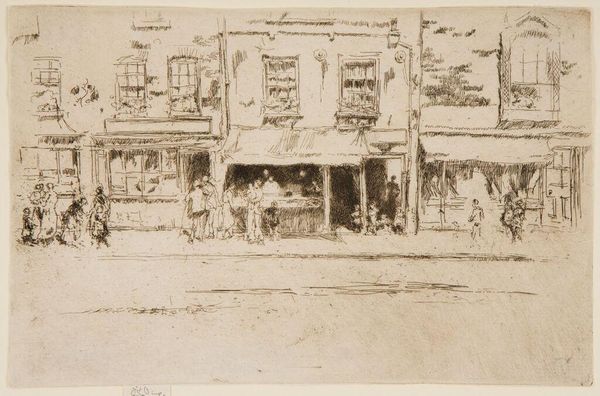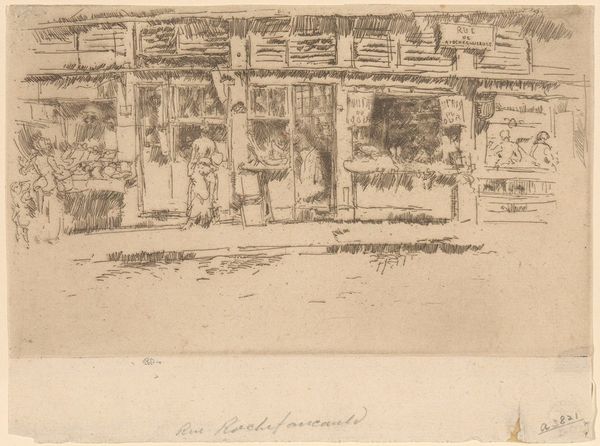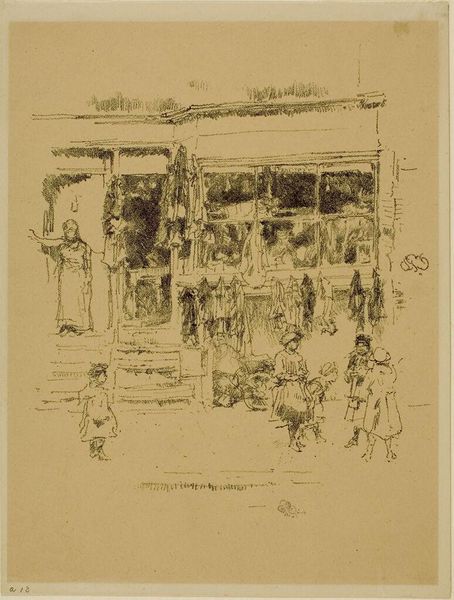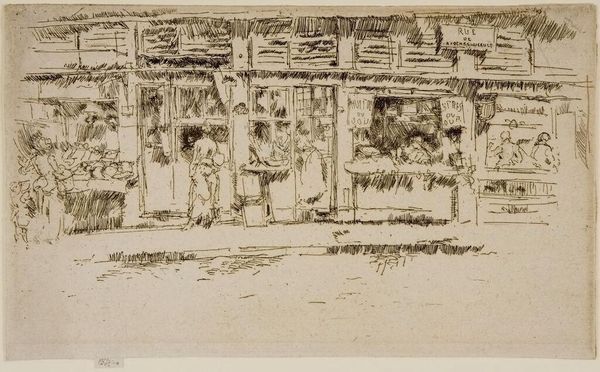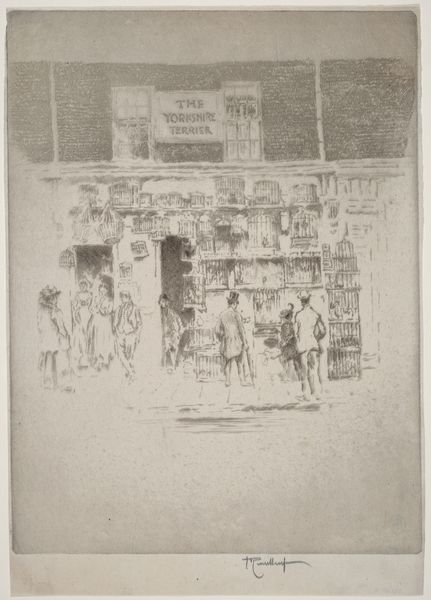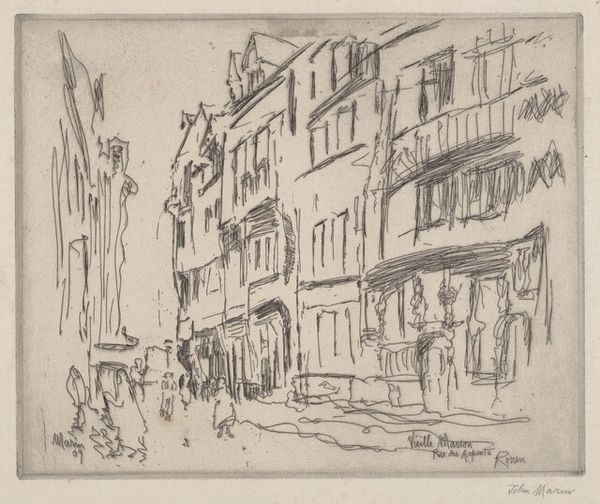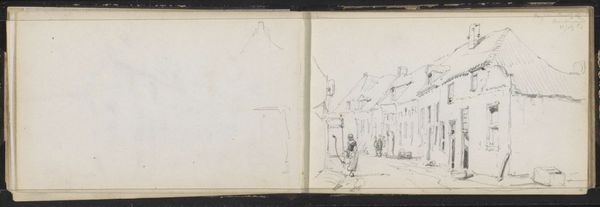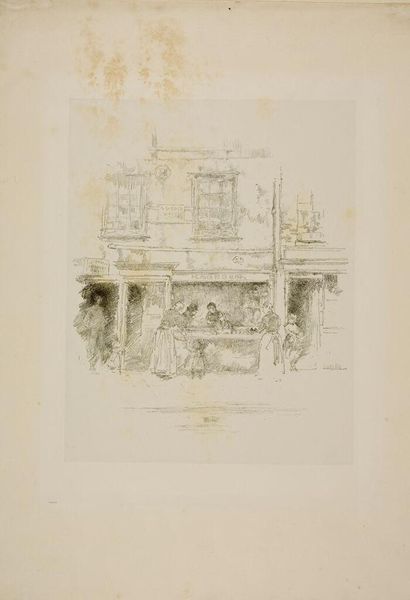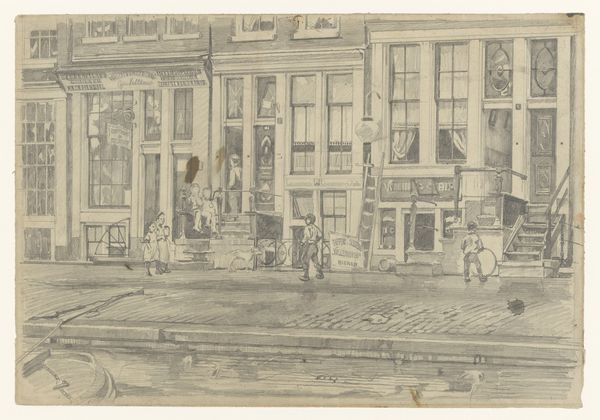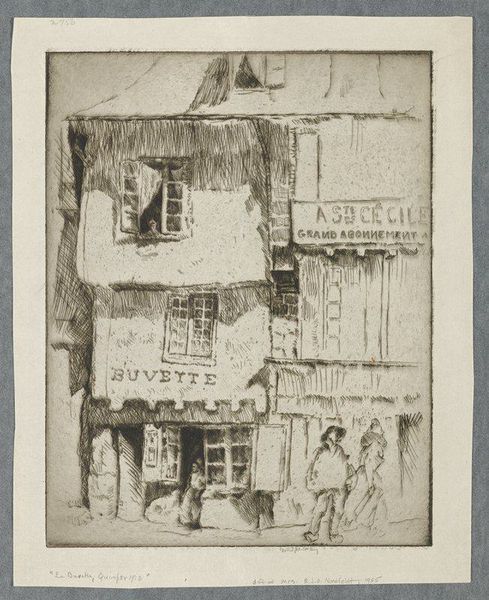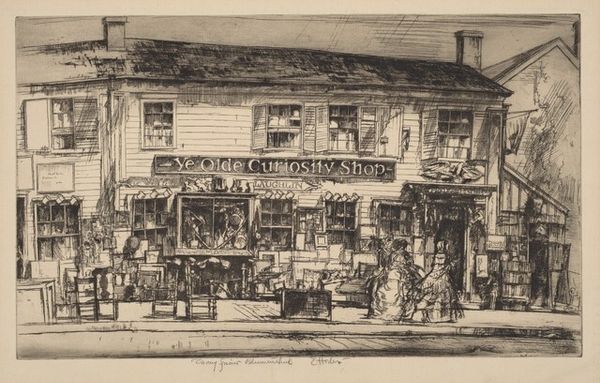
print, etching
# print
#
impressionism
#
etching
#
line
#
cityscape
#
genre-painting
Dimensions: height 139 mm, width 217 mm
Copyright: Rijks Museum: Open Domain
Editor: This is "Viswinkel in Chelsea," or "Fish Shop in Chelsea," an etching by James Abbott McNeill Whistler, dating from 1884 to 1886. I find it quite evocative, this scene. It’s like a snapshot of daily life, but it also feels a bit… unfinished, maybe? How do you interpret this work? Curator: It’s precisely that "unfinished" quality that speaks volumes. Whistler wasn’t simply documenting a fish shop. Consider the social context: Late 19th-century London was grappling with immense change—industrialization, urbanization, class divisions. Whistler's impressionistic approach, focusing on atmosphere and fleeting moments, resists a purely realist representation of working-class life. He is less interested in accurate depiction, and more in documenting the emotional impact of this rapidly changing city. Editor: So it’s about more than just what we see in the picture? Curator: Absolutely. It’s crucial to think about who is depicted and who isn’t. Are the workers visible? Are they individualised? Or are they generalized members of the anonymous public? Are women and children present, and how are they posed and situated relative to other people? Who has access to this “scene?” And from what perspective? By obscuring details and highlighting the overall tone, Whistler prompts us to contemplate the hidden stories within these scenes, forcing us to think about the politics inherent in his style, and asking how impressions function in a period of unprecedented urbanization. Editor: That makes a lot of sense. The vagueness, then, encourages the viewer to project their own understanding onto the scene, filling in the gaps of that urbanization? Curator: Exactly. It’s not about what’s literally there, but what’s suggested. What it means to *look* at the world in a very particular, almost detached way. In short, he’s critiquing social observation itself. The "fish shop" then, becomes a symbol of a society grappling with its own rapid transformation. Editor: Wow, I’ll definitely see this—and other art—in a new way now. I never really thought about impressions that way! Curator: The best art should always make us reconsider the way we engage with the world.
Comments
No comments
Be the first to comment and join the conversation on the ultimate creative platform.
